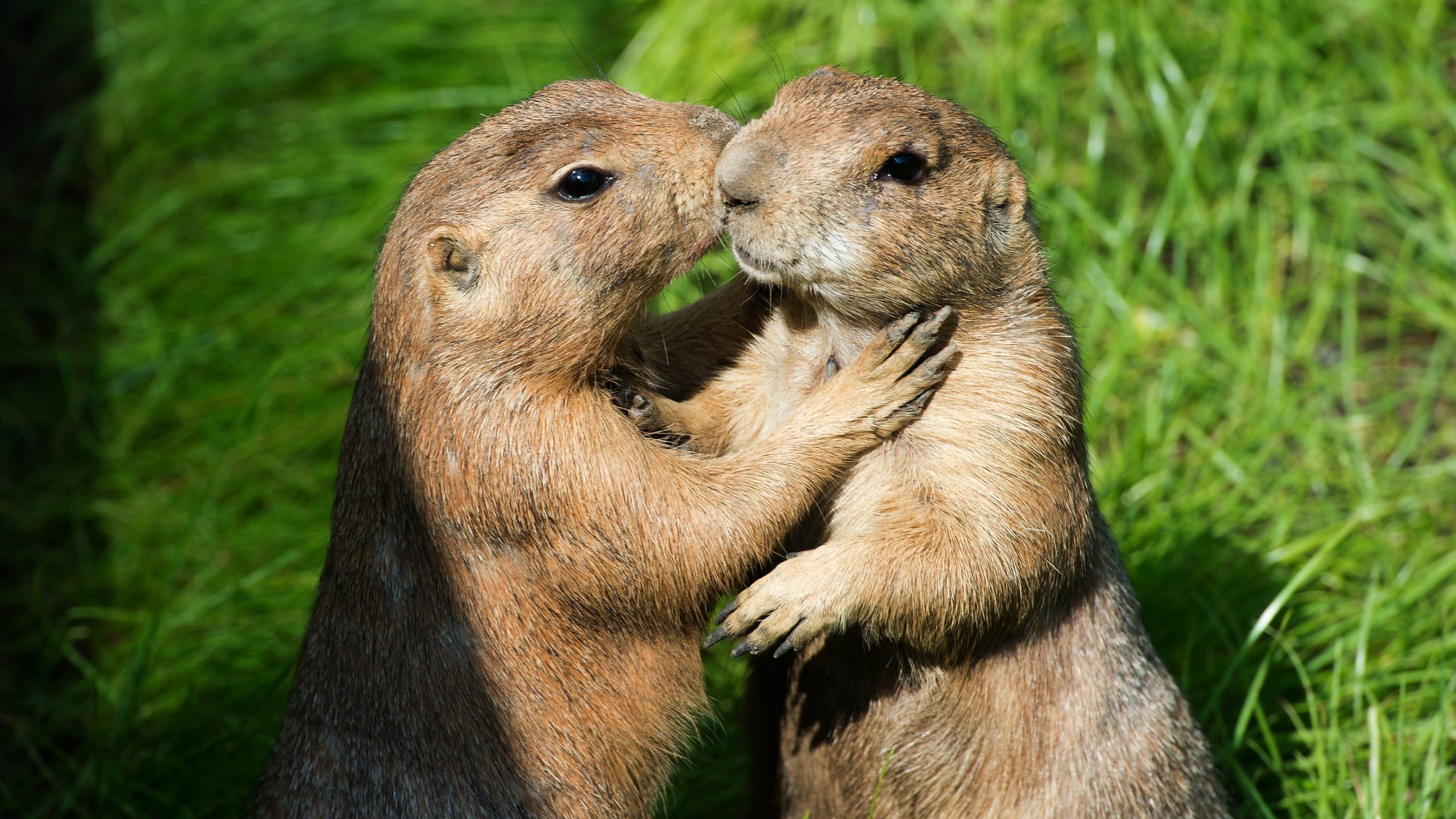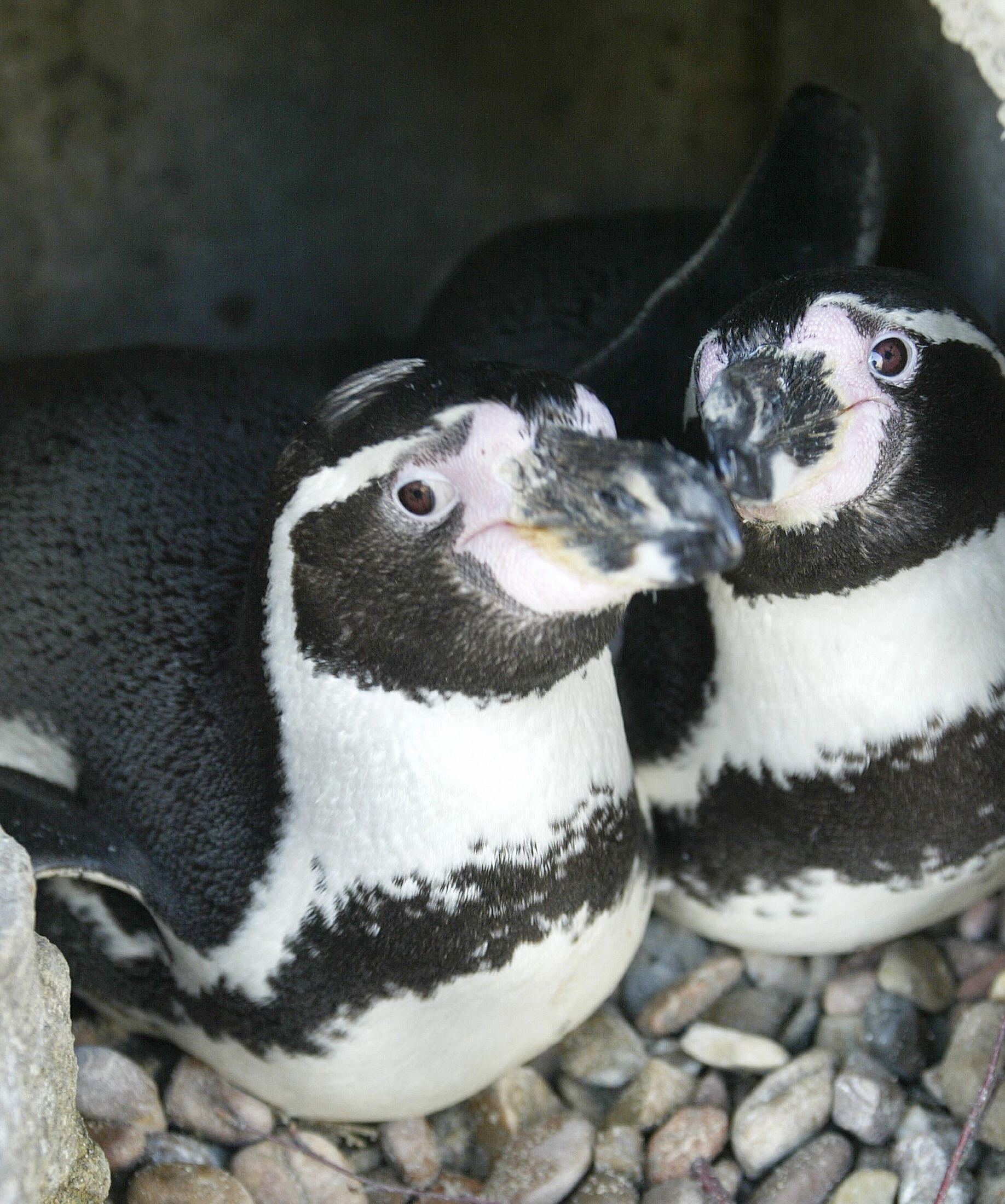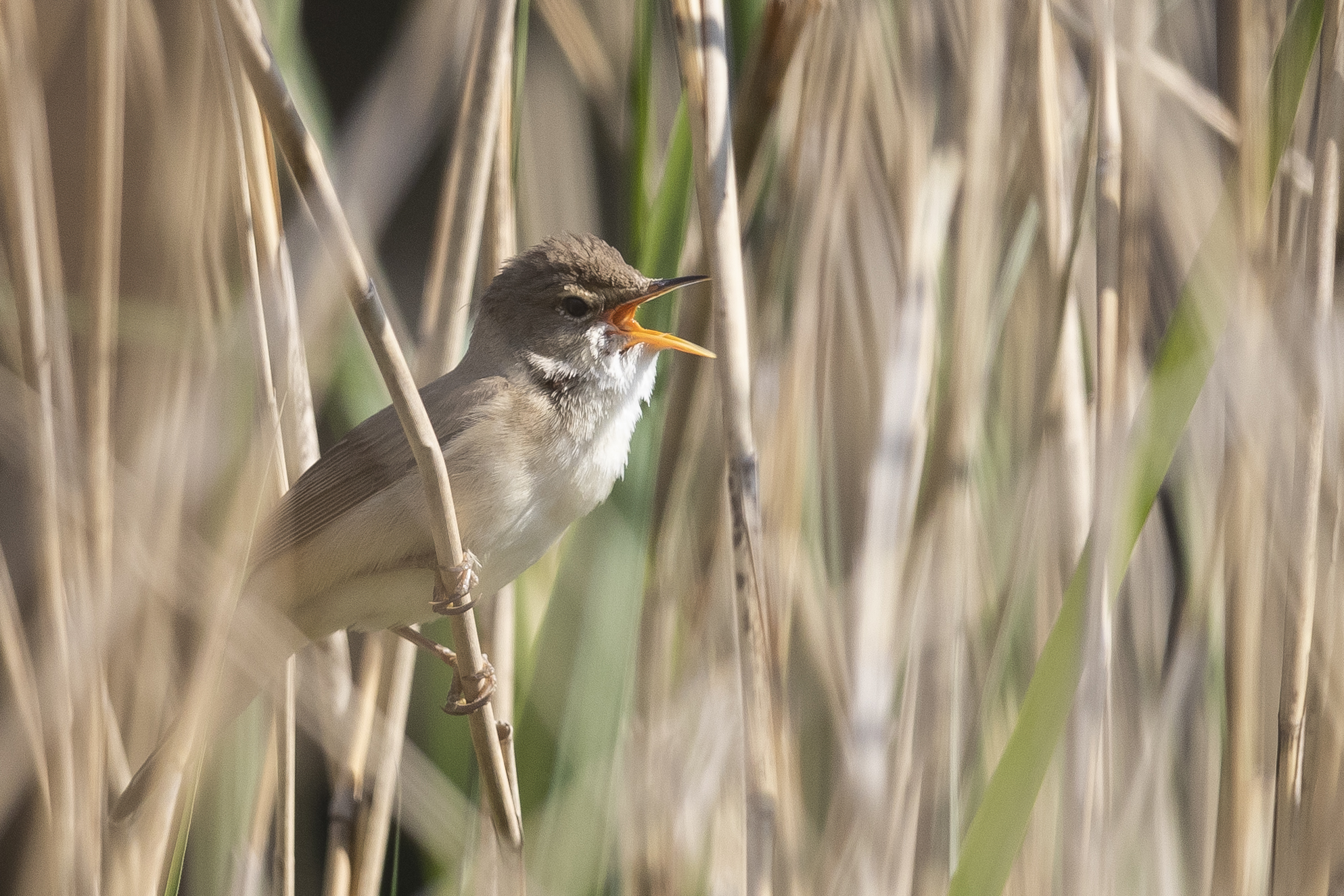Humans and other animals are quite alike — we all just speak different languages. For humans, it’s about the spoken word. With animals, the language may have nothing to do with the auditory sense. It could be gorgeous, like Caribbean reef squid that communicate through colour patterns. Other times it’s tactile, like the way that slugs leave a slime trail with different chemicals in it to communicate something.
The latter is the subject of Eva Meijer’s exhaustively researched book, Animal Languages, about how nonhuman animals communicate and just how much humans misunderstand them. Meijer’s book seeks to undo misconceptions that animals are lesser than their human counterparts, and in doing so she seeks a new world where animals and humans are living harmoniously.
Meijer, who was born in Hoorn, about 45 kilometers north of Amsterdam, and now lives just outside of the city with her two dogs Olli and Doris, caught up with Gizmodo to talk about her book, which has been translated from Dutch into 17 other (human) languages. This interview has been edited for length and clarity.
Gizmodo: Which animal languages do you find most fascinating?
Meijer: The language that’s been studied in most detail is the language of the prairie dogs. I like to start my talks with that because they speak about humans in detail in these small squeaking sounds — like a human is coming onto their territory, what they are wearing and that they are coming. The language of bats is becoming increasingly well studied. They have these really complex ways of communication. Most of it is inaudible because it is too high for us to perceive. I am also really fascinated by all of these small insects that communicate with scents and sounds and sometimes movements. It is incomprehensible for us because we cannot perceive it, but it really changes your view on the garden.

I recently moved from Amsterdam to a small village, and this garden is sort of unfolding in real time. There are lots of insects — they communicate in many ways with one another. Slugs communicate with the slime trail they leave behind and the chemicals in there. I am also really fond of the Caribbean reef squid that communicates with the colour pattern on their skin. These patterns are very fast and researchers think they work like language, with grammar, nouns and verbs, all these ways to speak through colour. I think that’s fascinating and an aesthetically beautiful way of talking to each other.
I really appreciate the fact that the dogs I live with take a lot of time and they are quite gentle with trying to explain me certain things. My younger dog comments a lot on my behaviour. When I do something she thinks is stupid she looks at me like, “Why am I doing that?” She comments on her own behaviour sometimes — she sometimes gets caught up in the barking. Sometimes she will get out of the barking and look at me as if to say “Let me bark!” and then resumes barking. It is nice to be able to spend time with those who experience the world different and learn to see through their eyes.
Gizmodo: What do you find is the most common misunderstanding that humans have about animal languages that you seek to rectify through this book?
Meijer: On a very, very basic level, people just very often do not consider the fact that animals actually communicate with each other and with us. For example, with birds, a lot of people think birds sing because it sounds nice. But they are talking with each other, trying to negotiate stuff, make friendships, whatever they do. Even people who live with companion animals and get the fact that they communicate with us and we with them, but when it comes to animal minds it becomes very sceptical. But then the thing is you do because you are interacting with them and you can have a pretty decent guess of what they are saying, even if you can’t understand it — the fact that they are saying something. I guess that is the very basic prejudice that I wanted to challenge with this book. I also want to dismantle the matter of hierarchy, that human languages are better than the languages of other animals, or that animals are stupid because we cannot understand what they are saying. But “animals” is a very broad category of which humans are also a part. In this group, there is prejudice that some communicate meaningfully and others don’t, which is why it’s nice that there is research about smaller animals, too.
Gizmodo: How do you reconcile the mating languages of animal species, such as male fiddler crabs attracting females by dancing in front of them with a big claw, with those of humans? How could queerness complicate and call into question these hierarchical structures?

Meijer: There is a discussion in a survey among penguin researchers, because penguins are very often queer — there’re many same sex couples that raise children together, but nothing about there was nothing about that in the literature until 1980s. Researchers were asked, why not write about gay penguins? They said that they didn’t want people to think they were gay if they were writing that, because [their sexuality is] their private life. So basically because it was a problem with it in human society, they projected that onto the birds.
There is the dominance theory, which is a trend in studies of wolves, primates, baboons, great apes. It’s the idea that there is a hierarchy in group, with the male at the top, then female, and others below that. But feminist research actually shows this only happens in certain circumstances. When studied in captivity, these studies are set up in such a way that this is the result that comes out of it. If you study in the wild, it can be very different. There is in the literature about animal capacities and behaviours a great number of biases. There is a prejudice [against] females. I spoke about birds who sing before and humans thought for a long time only the males sing — but no females also sing. The same applies to mice, but the female mice sing often in frequency that is too high for us to hear. There are so many things we never figured out.

Gizmodo: I’ve heard people say that humour is the hardest thing to acquire in a second language. That the thing they miss the most about their newfound second language is that they aren’t funny — because the humour from the first language doesn’t translate. Based on your studies on language in animals that are bilingual, do you find this to be similar? How so or how not?
Meijer: Somebody should write a PhD about humour in animals because it’s very under-researched, especially in domesticated animals that are bilingual like cats, dogs, pigs, chickens. All these animals co-evolved with humans, and they know us quite well and we know them. When I find something funny, the dogs [I live with] acknowledge that. Sometimes they will wag their tail when I am laughing. What you see at the dog school is during the exams, they really need to sort of do their best but then there is some tension and then the dogs get overexcited. Then they suddenly decide to run around. Often the very obedient dogs who did very good every lesson, they think this is a funny moment and will now run and round and not listen at all. So there are some formalized ways of humour.
Play is a form of humour, too. There is a connection between play and fun but I think that is interspecies humour. There are anecdotes, but I think a lot of people don’t get the jokes. I am thinking about bird researcher Len Howard who lived in the 1950s. She lived together with some birds, mostly grey tips but also robins and some others, and they were free to come and go [from the house]. In her book she is quite a funny person, but nowhere in her books does she describe jokes, like how the birds use her hair to play in, use her pillow for skiing. They sometimes come to her for the sake of it, but she doesn’t write about it as humour anywhere, as if that is a dimension of behaviour is still lacking.
Gizmodo: After writing this book, how do you picture the future of interspecies communication?
Meijer: A lot of people tend to think about this in a way that’s similar to climate change. People are talking about improving the world with technological innovations, like apps with which you can record barks and then sort of decode them. But the thing is, sometimes technological stuff can be helpful, maybe when you encounter a community of animals you’ve never seen before and don’t know what to do, but most of it is about changing our attitudes. It all begins with listening to others, not seeing others as inferior, being curious about their experience and the stuff that they are doing.
I think that many animals are quite generous in what they show us and what they do, and the ones that aren’t they have every right not to be. I don’t think it’s simply a matter of more empirical research — a lot of that research is coloured in some way by the societal relations that are in place at the moment, so it is also about changing our attitudes as humans and maybe also, the question of how we deal with how animals is so much about repositioning about how we are dealing with ourselves as humans, like with the coronavirus pandemic, climate crisis, all of these things are connected to how we as humans are arguably separated from the natural world, that we exploit the Earth and animals on such a large scale. Us reinventing ourselves is not a matter of technological progress or controlling what is going to change. It is about finding new ways of connection, new ways of coexisting, listening to others, and also understanding that this is not taking a step back or losing something, but it can instead give us a whole lot of richness and perspective.
You see the same thing with the discourse about refugees and sort of far-right populist politics, positioned as “if they come in, we have less” — but we don’t. It is interesting if people come from another place and you can talk to them and learn from them and at a certain point even make jokes with them, even learn the same language. I think a lot of it as humans is developing a different attitude and I hope we can do that.

Gizmodo: What about the topic of animal languages inspires you?
Eva Meijer: I started to study philosophy. It soon became clear that philosophy is a matter of humans thinking about humans. Also, there is a great lack of female philosophers. I came from an arts background, and there the conversation was in full swing in speaking about women but that didn’t really translate to the philosophical world. I also had an interest in social justice, feminism, animal rights. I started studying philosophy as a way to express myself.
My father had always collected newspaper articles for me about animals. I don’t why. So I had this big folder about crows who could count or solve puzzles, whales that took care of each other in certain ways, and then there was this philosophical delineation of only focusing on the humans — so I felt maybe I had something to contribute to that. I wrote my master’s thesis on the political communication between animals. That is sort of where my academic interest started, and of course that is also fuelled by my own experiences of living with animals. I had a horse when I was younger, we always had cats and guinea pigs, I live with two companion dogs — it’s a personal interest but also philosophical.
When you read all these studies about animal languages it turns out that a lot of the things we thought were unique to human languages are in animals, like grammar, sentences, or words. But they are never completely the same. For example, animals may not communicate with words, even though there are animals that do speak or understand. Many use different ways of expression, for example like colour, sense or bodily expressions or all of these things. Sometimes it’s also funny but very challenging subject matter and that’s what makes it interesting. What can language be? In the human case, our views about language are also too narrow. So I am really fascinated by this. It’s also why I also write novels and songs and other things.
Gizmodo: What do you mean by “‘humans’ views about languages”?
Meijer: I think language is often simply seen as a vehicle for expressing information — the idea of language as only involving spoken or written words, while there is of course body language. Wittengenstein wrote somewhere that “the clothing of our language make everything look the same” — because of how our language is constructed. For example, when you take a word like “love,” that word is the same in many different contexts. Because it is the same word, many people think the meaning is the same but it means something different in all these contexts — it’s important when you’re thinking about animals. Often people think “love” is human love like romantic love, maybe the conception of love formed by Hollywood movies. Love can take many shapes between humans, but can play a role in the lives of other animals. There is not precisely the same as the human interpretation of it, but bears a family resemblance to these human types of love. There are lots of ways in which language forms our world.
The ways in which we use language are sometimes so much focused on efficiency. You also find that the discourse around the coronavirus. Here in the Netherlands it is very focused on management. It is really this bureaucratic language which is aimed at getting everybody back to work as soon as possible and the propaganda… but that doesn’t do justice to reality, which is why we need poetry and other forms of expression to capture the richness and the weirdness of our reality. And I think that’s the language of other animals that have their own view on the world.
Eva Meijer is an artist, writer, philosopher and singer-songwriter. She has written nine books, and is currently a post-doctoral researcher at Wageningen University in the Netherlands.
Alicia Eler is a queer Turkish-American writer, visual art critic at the Minneapolis Star Tribune, and author of The Selfie Generation.
